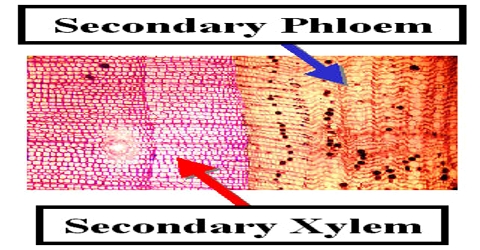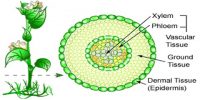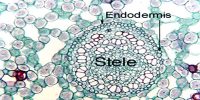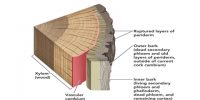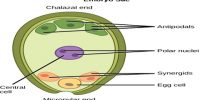Formation of secondary xylem
The cells formed toward the inside are called secondary xylem, or wood, and those formed toward the outside of the cambium are called secondary phloem. The bark and the wood together constitute the secondary plant body of the tree. Secondary xylem is absent in non-woody plants and is present in trees and shrubs. It consists of large sized tracheids and vessels.
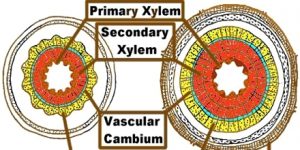
I) Each cell a of cambium ring is divided to produce two cells, of which one acts as a cambium mother cell and the other as xylem mother cell (remaining inside) or a phloem mother cell (remaining outside)
ii) Mother cells (xylem mother cells or phloem mother cells) add more cells inwards than outwards through repeated divisions.
iii) The cells formed on the inner side grow to their full size and become permanent to form a secondary xylem tissue and cells formed on the outer side form a secondary phloem tissue.
Secondary xylem tissue: Vessel, trachea, xylem fibre and xylem parenchyma
Functions: Secondary xylem tissue conducts water and mineral salts and gives mechanical support.
